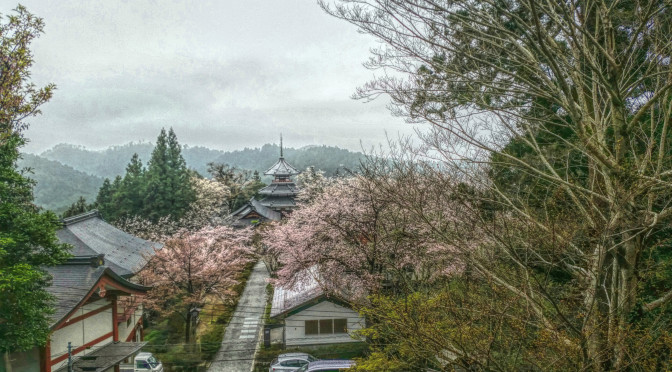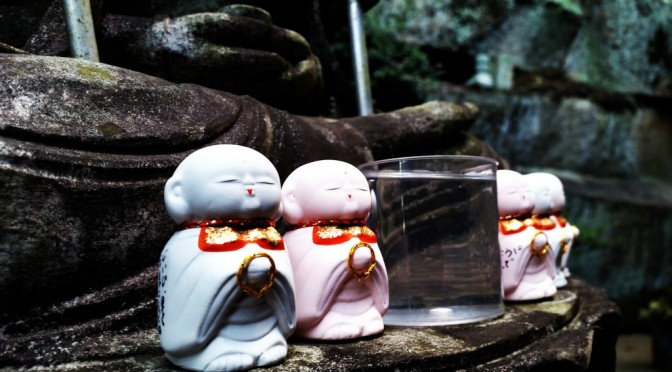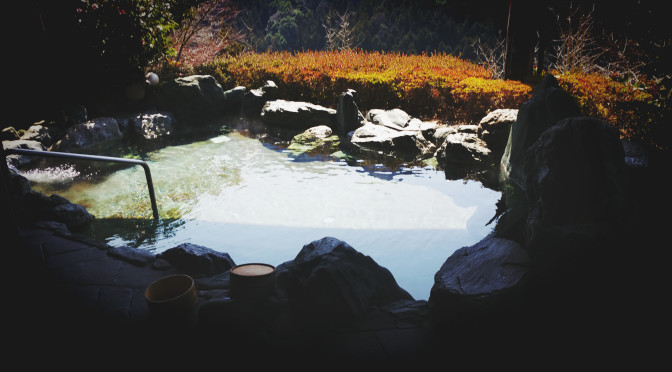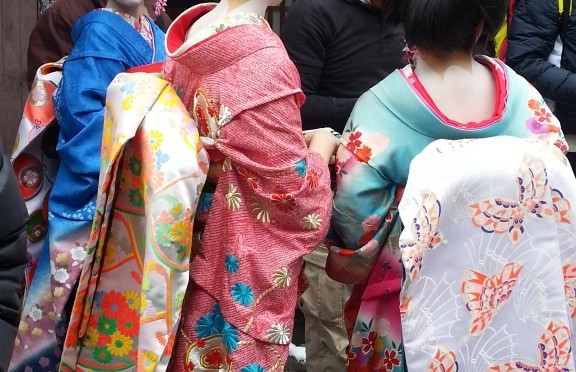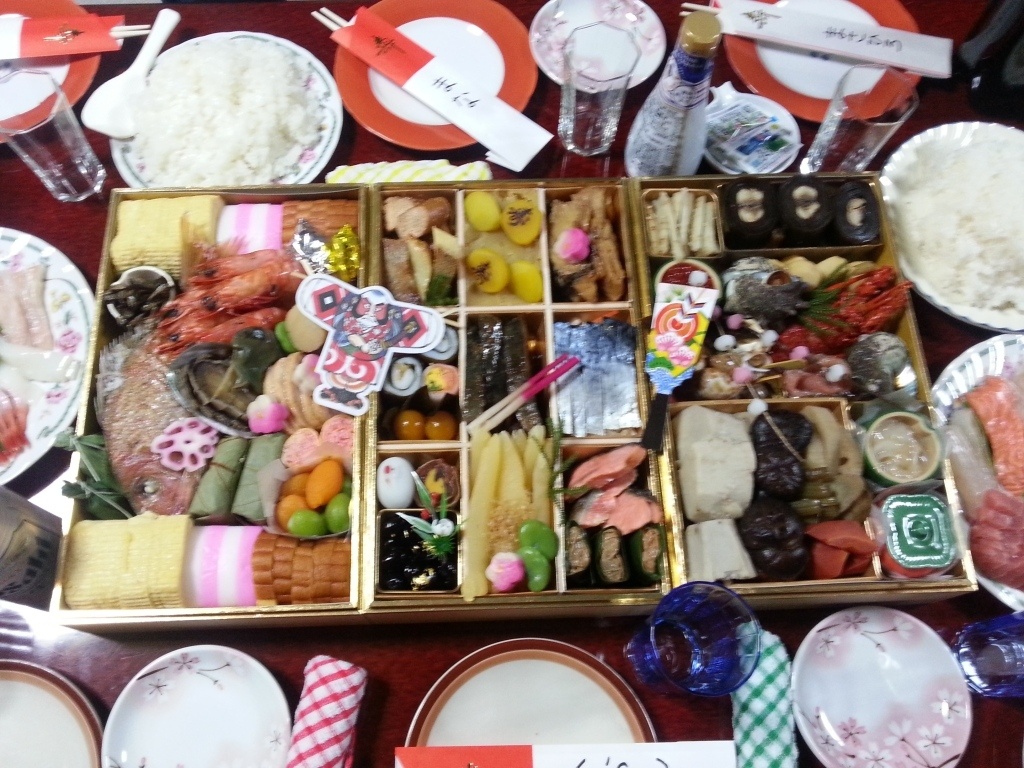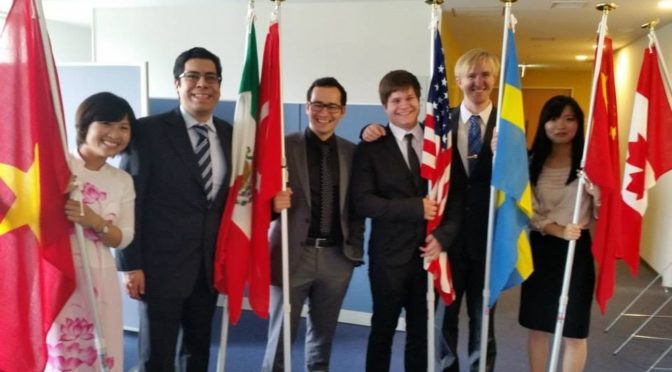Once again I used the discount ticket (seishun 18 kippu) to travel deeper into western Japan. I began the journey from Kansai, and the first stop of the day was Onomochi, which is famous for having many temples despite its small size. I went on the “Temple walk”, starting with a 5 min cable car ride up the local mountain. The senkoji park provided a spectacular view of the town. On the way down, I saw many things: from small ojisozan statues to a wild catfight. Later, I enjoyed a beautiful and delicious waffle and then walked around the town until I decided to stop for some excellent ramen. Having appeased my appetite, I continued onwards to Hiroshima.
On the second day, I didn’t use the seishun ticket, but instead spent the day roaming around Hiroshima. Hiroshima is a comfortable town with wide streets and friendly people. I had lunch by the riverside and helped translate “The possibilities are endless” to “可能性は無限大” for an old Japanese man who had a cap with that saying in English。
At the Hiroshima Peace Memorial Park, I was approached by many high school students to help them with their school project and folded many paper cranes, which are a symbol of peace. I felt a little melancholy the rest of the day after seeing the horrors of the atomic bomb and its effect on the people of Hiroshima at the museum. Before the sunset, I went to Shukkeien Garden, and enjoyed the sight of bonsai trees and many turtles and carps in the pond. As it was getting late, I continued to “okonomimura“, which is a portmanteau of the words for Japanese pizza (okonomiyaki) and village (mura). There, I enjoyed the pleasant of Hiroshima-style onomoiyaki made from noodles and a lot of vegetables.
On the third day, I woke up early and took the train towards Iwakuni. The lunch of the day was skewered meat, squid and a beer, which I enjoyed while sitting down by the river close to the beautiful Kintai bridge. After that, I took the ferry over to miyajima and went straight to my Japanese style inn (ryokan) to drop off my luggage. One of the many goals for the trip was to hike Mount Misen, so I took the cable car up to the peak and gazed upon a spectacular view. On the way down, I descended thousands of stone steps and stopped by many small shrines and temples, including the amazing Buddhist temple, Daisho-in.
I ate a full course dinner at a restaurant called Mametanuki and I finished the night by taking night shots of Itsukushima-jinja. Finally, I took a dip in the ofuro (Japanese style bath) and went back to my room and slept like a log.
At 10:05 AM on the next day, the lady in charge of the inn woke me up and kindly reminded me about the checkout time at 10:00. Leaving the hotel, I went back to Itsukushima jinja and bought a book called “shuinchou“, which is a special book used to collect stamps and hand-drawn calligraphy from the temples and shrines in Japan.
Once back at mainland Japan, I took a 7-hour journey back home to Kansai using local trains.
西日本へ旅行し、尾道、広島、岩国と宮島に寄って行きました
私はもう一度青春18切符を使用して、西日本へ旅行をしました。関西から出発し、その日の最初のストップである尾道へ行きました。尾道は数多くのお寺があることで有名な小さな町です。そこで私は寺ウォークをしました。山の上まで5分くらいロープウェイに乗って、そこから寺ウォークを始めました。山頂にある千光寺公園からの眺めは町全体を見渡せる素晴らしいものでした。山を下る途中で小さなおじそうさんの彫像や野生の猫の戦いなど、いろいろなもの見ました。下山してから、私は美しくておいしいワッフルを楽しみ、夜ごはんのラーメン屋さんを見つけるまでの時間もう少し町を散策しました。そしてその夜、広島へ向けて旅を続けました
二日目、私は青春18切符を使用せず、その代わりに広島市内をうろうろしました。広島は通りが広く、また親切な人が多い快適な町です。川岸のお店に寄って昼ごはんを食べたとき、英語で”The possibilities are endless”と書いてある帽子を被っているおじいさんがいました。その人に、この意味は何かと尋ねられたので「可能性は無限大」と訳してあげました。
広島平和記念公園では、高校生たちの学校のプロジェクトの一貫として平和のシンボルである折り鶴を一緒に折るように声を掛けられました。平和記念公園にいる間たくさん高校生に出会ったので、その都度一緒に鶴を折りました。原爆資料館で被爆した方々の影響や原爆の恐ろしさを見たあとは一日中もの悲しい気持ちでした。資料館をあとにして、陽が沈む前に縮景園に行って盆栽の木や池にいた亀や鯉の姿を見て楽しみました。だんだん辺りが暗くなってきたときに、日本のピザ(お好み焼き)のお店が集まる村、”お好み村” へ、足を延ばしました。そこで麺とたくさんの野菜で作られた広島風のお好み焼きを食べました。
3日目、朝早く起きて岩国に向かうため列車に乗りました。ランチは、錦帯橋の近くの川岸に座って牛串いか串に合わせてビールを飲み、そこから望む美しい景色を楽しみました。その後、宮島口へ戻り宮島へかけてフェリーに乗りました。宮島に着いてすぐ荷物を置きに和風旅館へ向かいました。この旅の目的の一つは弥山をハイキングすることだったので、山中まではケーブルカーに乗り、その後歩いて上を目指しました。世界遺産である弥山山頂からは壮大な景色を見ることが出来ました。下山道では数千ぐらいある石段を一歩ずつ歩きながら、大聖院を含む素晴らしい仏教寺院や多くの小さな神社に寄って下りてきました。
豆狸と呼ばれる居酒屋さんで晩御飯を済ませ、暗闇にそびえ立つ厳島神社の鳥居を写真に収め宮島での1日を終えましたそして旅館で広いお風呂に浸かり疲れを癒してから自分の部屋に戻って木のように寝ました。
翌日の午前10時5分、宿の女将さんが親切に10時にチェックアウトやでと私を起こし、私は宿をあとにしました。厳島神社へ戻って、日本のお寺や神社のスタンプや手描きの書道を収集するために使用される特殊な本(朱印帳)を買いました。
そして本土へ戻りそこからまた18切符で7-8時間かけて関西へ戻るための帰路へ就きました。
